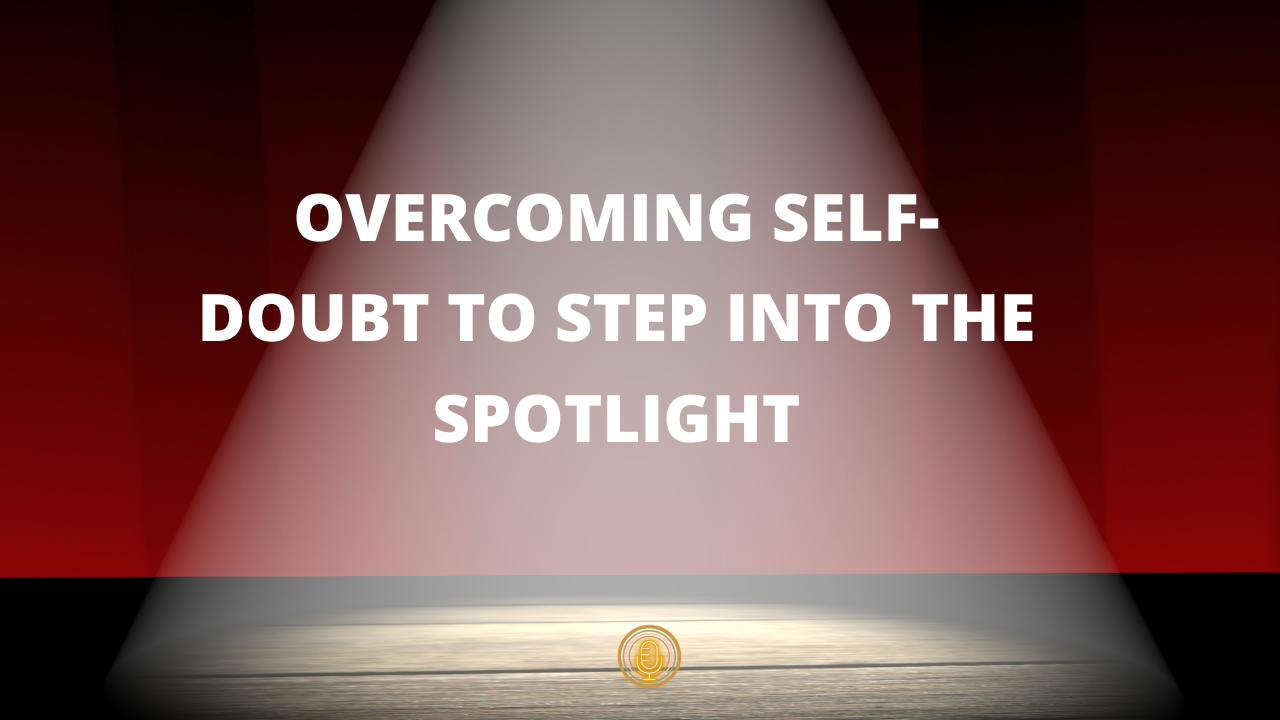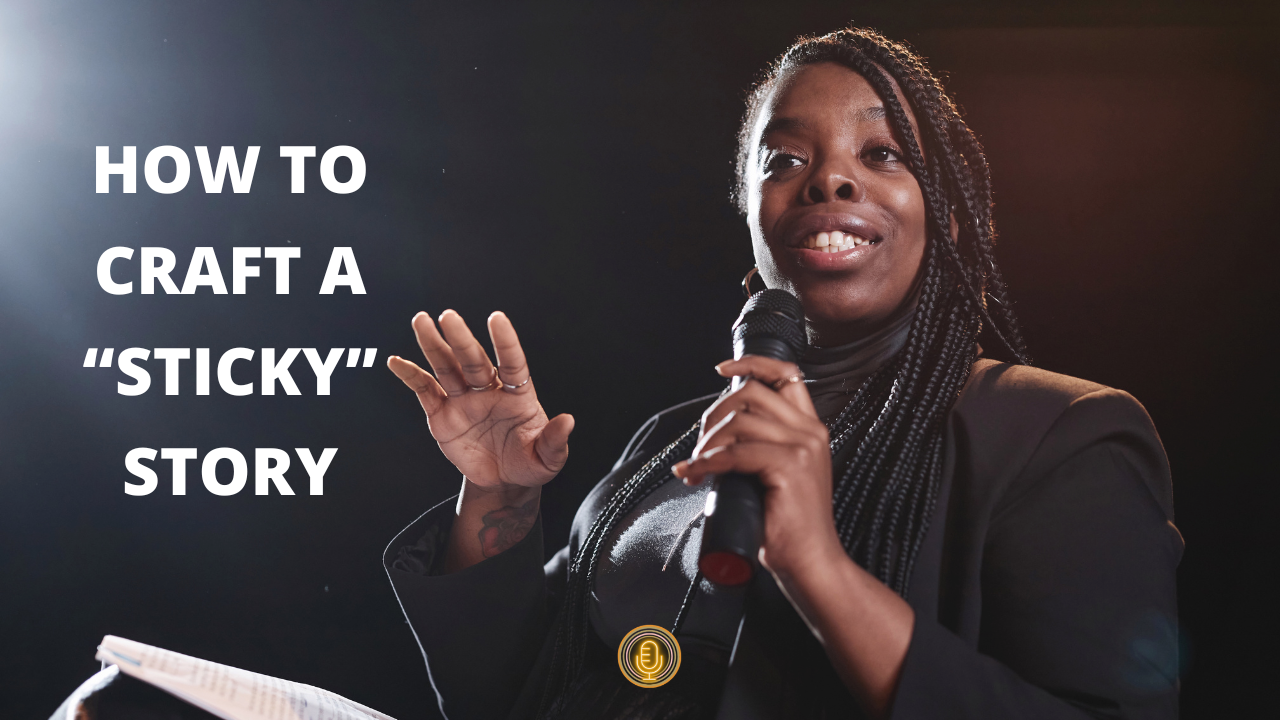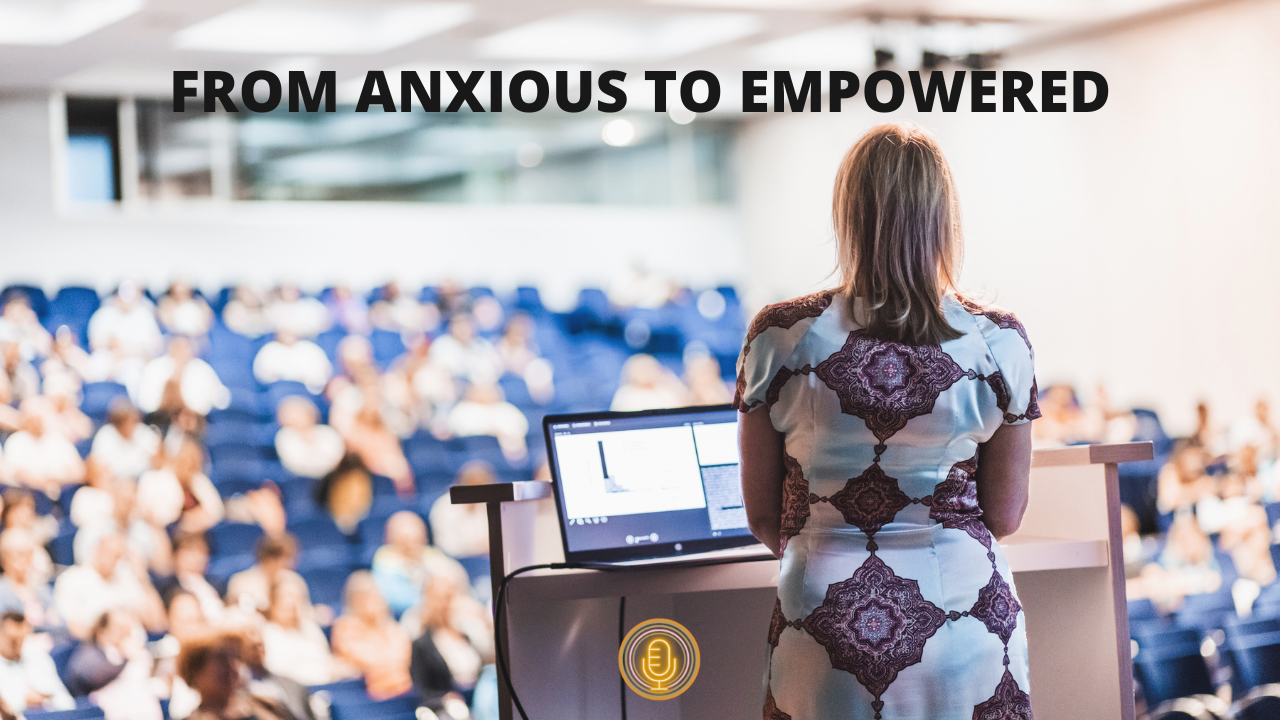Blog
Practice with Purpose: 7 Tips for Stage-Ready Practice

We’ve all heard the saying, “Practice makes perfect.” But let’s be honest—perfection isn’t the goal. Confidence is. I prefer to say “Practice makes PERMANENT” because you will perform in the way that you rehearse!
Whether you’re preparing for a keynote speech, a business presentation, or simply sharing your story in front of an audience, how you practice will make all the difference. Great speakers don’t just wing it—they prepare with purpose.
The secret isn’t rehearsing until you’ve memorized every word—you are not a robot simply memorizing a sequence of words. The real secret to effective rehearsal is doing it in a way that builds familiarity with your content, confidence in your voice, flexibility and adaptation, and a strong connection with your audience.
In today’s article we will talk about how to practice effectively so that you walk onto any stage feeling confident, prepared, and powerful, not panicked.
1. Rehearse Out Loud—Not Just in Your Head
It’s one thing to read thr...
From Fear to Fuel: Turning Self-Doubt into Speaking Confidence

Self-doubt has a sneaky way of showing up right when you’re about to do something big.
Whether it’s stepping onto a stage, speaking up in a meeting, or sharing your story with the world, that little voice inside whispers, “Who do you think you are? What if you fail? What if no one cares?”
But here’s the truth: self-doubt is not a stop sign. It’s a signal that you’re stepping into something important.
The fact that you feel nervous means you care. And instead of letting that fear hold you back, you can use it as fuel to propel you forward.
I’ve worked with so many incredible women who doubted their voices, questioning whether they were “qualified” to speak. They worried about being judged, making mistakes, or not having a story worth sharing. But through intentional practice (and only a few tears!), they learned to own their voice, step onto the stage, and inspire others.
If self-doubt has been keeping you silent, it’s time to challenge it. You don’t have to wait until you “feel ...
Own the Stage: How to Deliver a Speech with Confidence & Impact

Crafting a great speech is one thing. Delivering it with confidence, presence, and impact is another. In last week’s article (find it HERE) we discussed the building blocks of a great speech. Today, we are going to talk about how to deliver that great speech with confidence, impact, and value!
You can have the most powerful message in the world, but if your delivery falls flat, your audience won’t connect with it the way you want them to. That is why delivery matters just as much as structure—how you say something is just as important as what you say.
The good news? Confident delivery is a skill you can learn. You don’t have to be born a great speaker; you just need to know how to use your voice, body, and energy to bring your message to life.
Let’s break down the essential elements of powerful speech delivery so that when you step on stage (or in front of any audience), you do it with confidence and impact.
Own the Stage with Presence
Before you even say a word, your energy sets ...
Anatomy of a Great Speech

A great speech isn’t just a collection of words—it’s a carefully constructed message designed to inform, inspire, or persuade. Whether you’re speaking on a stage, leading a workshop, or pitching an idea, the building blocks of your speech are the same!
I want you to think of your speech like a house. Without a strong foundation, it crumbles and without a clear design, it confuses. But when built intentionally, with the right materials, it stands strong and leaves a lasting impact.
If you’ve ever felt overwhelmed by the idea of crafting a speech, don’t worry—you already have everything you need to create a powerful message. You just need a structure that supports and amplifies your voice.
Today I am going to give you that structure! Here’s a step-by-step breakdown of the key building blocks of a great speech.
-
The Hook: Grabbing Attention from the Start
Your opening is your first impression—it sets the tone and determines whether your audience will stay engaged or mentally ...
What My Clarinet Taught Me About Confidence on Stage

Confidence doesn’t happen overnight. It’s built day by day, note by note, moment by moment, just like practicing a piece of music.
As a clarinetist with over 30 years of performance experience, I’ve learned that preparing a solo for performance is no different than preparing a speech for performance. Both require preparation, patience, and, most importantly, a willingness to grow from every experience—no matter how uncomfortable or imperfect. That willingness also includes acknowledging our fears of failure and doing it anyway.
When I first started playing solos in 7th grade, I would get so nervous. My hands would shake (making it difficult to hold my instrument), my breathing would get out of sync, and I’d forget to exhale all the way, and I sometimes questioned whether I was good enough to perform. And then, every time I did it, I felt amazing and received applause and congratulations from the audience. Just like the client I mentioned in last week’s article, I spent way too much ...
Overcoming Self-Doubt to Step into the Spotlight

Self-doubt can be an unwelcome companion for anyone stepping into the spotlight. Whether it’s a small presentation, a keynote speech, or simply sharing your voice in a meeting, the nagging question of "Am I good enough?" can hold even the most capable people back. But here’s the truth: self-doubt doesn’t have to define your journey. It can, instead, become a steppingstone toward your growth.
I have seen incredible transformations in women who, at first, doubted their ability to speak up and their worth in doing so. They felt inadequate, convinced that their voices didn’t carry the weight or wisdom needed to make an impact. But through intentional steps, and only a few tears, they learned to embrace their worth and boldly use their voice to speak out. Their stories are proof that you too, can break through the barriers of self-doubt.
I want you to think of the battle between self-doubt and self-confidence as a great tug-of-war match in your mind. Your inner thoughts, negative self-tal...
How to Craft a “Sticky” Story

Every great speaker has one thing in common: the ability to tell a story that lingers in the hearts and minds of their audience. Stories have the power to inspire, educate, and connect. They are the threads that weave our human experiences together, and when told well, they create an impact that outlives the moment.
Crafting a story that sticks doesn’t require you to have a life filled with extraordinary events. On the contrary, the most impactful stories are often rooted in everyday experiences. The power of your story isn’t in what you’ve done or experienced; it is in sharing what you learned through them.
Let’s explore how you can turn your story into a memorable masterpiece that resonates with your audience.
The first step in crafting a memorable story is to reflect on your experiences. Think about moments in your life that taught you something meaningful—a lesson learned, a challenge overcome, or even a seemingly small moment that shifted your perspective. These moments don’t ...
Her Story, Your Story

There is something magical about hearing a woman tell her story—not just the polished parts, but the raw, real, and vulnerable moments that have shaped who she is. Stories have the power to connect us, inspire us, and remind us of what we’re capable of achieving. And when women share their stories, they don’t just speak for themselves; they speak for those who have walked similar paths and for those who are still finding their way.
I’ve had the privilege of working with incredible women who have used their voices to inspire change and growth - not just in their audiences, but within themselves. Each of them started from a place of uncertainty, often feeling like their stories weren’t enough. But with courage and conviction, they stepped forward, and their journeys have become a beacon for others.
I often think about one of my clients, who is now a dear friend, and the journey she has been on. When we first met and started working together, she felt scattered. Like she had everything ...
From Anxious to Empowered

For many of us, the idea of stepping onto a stage can be terrifying. The sweaty palms, racing heart, and shaky voice often feel like insurmountable obstacles. But what if I told you that these symptoms of anxiety could be transformed into powerful tools for an impactful performance?
Stage nerves are not your enemy—they are a sign that you care. Instead of letting them control you, you can learn to harness that energy to enhance your confidence and delivery.
Here is a step-by-step guide to turning your anxiety into empowered energy.

-
Acknowledge and Accept Your Nerves
The first step in managing stage fright is recognizing it for what it is: a natural response to a challenge. Nervousness isn’t a sign of weakness; it’s a signal that you’re stepping out of your comfort zone.
- Action: Take a moment to acknowledge your feelings without judgment. Remind yourself that even seasoned speakers feel nervous before taking the stage.
- Mantra: “This energy means I care about doing ...
Speaking Up: How Women Can Use Their Voices to Create Change

The first time I saw a woman truly command a room, I was captivated. She wasn’t the loudest person in the room, but there was a quiet power in the way she spoke. Every word she said carried weight. Her voice seemed to cut through the noise, and in that moment, I realized that leadership isn’t about volume; it’s about conviction. It’s about speaking up for what matters, even when your voice shakes.
One of my favorite quotes comes from Malala Yousafzai: “When the whole world is silent, even one voice becomes powerful.” That idea has stayed with me, reminding me that we don’t need permission to speak—we just need the courage to open our mouth.
Every woman has something to say, a unique perspective that the world needs to hear. Yet so many of us hesitate, held back by doubts or fears of being judged. What if I’m not good enough? What if no one listens? These questions run through our minds, but the truth is, the only way to find out is to step forward and speak anyway.
Every time we sp...
